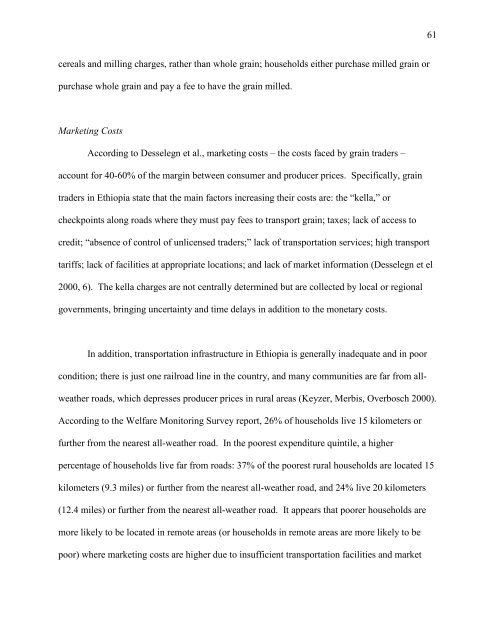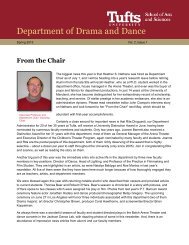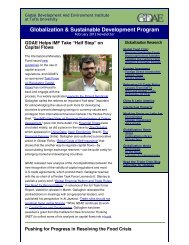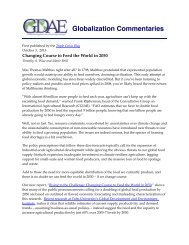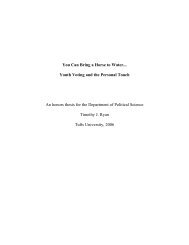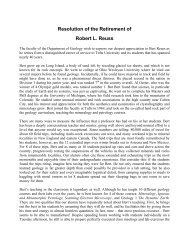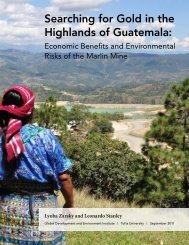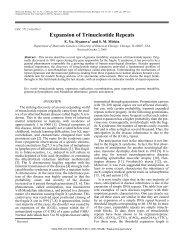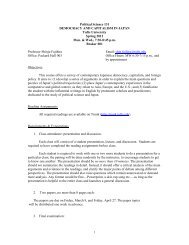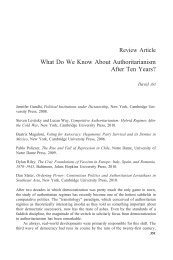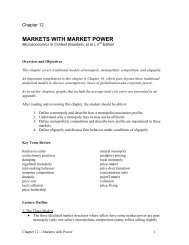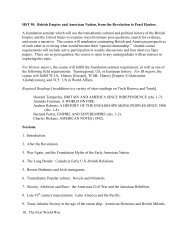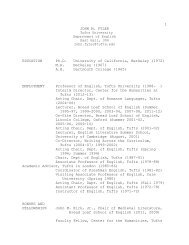The Impact of a New WTO Agricultural Agreement ... - Tufts University
The Impact of a New WTO Agricultural Agreement ... - Tufts University
The Impact of a New WTO Agricultural Agreement ... - Tufts University
Create successful ePaper yourself
Turn your PDF publications into a flip-book with our unique Google optimized e-Paper software.
61<br />
cereals and milling charges, rather than whole grain; households either purchase milled grain or<br />
purchase whole grain and pay a fee to have the grain milled.<br />
Marketing Costs<br />
According to Desselegn et al., marketing costs – the costs faced by grain traders –<br />
account for 40-60% <strong>of</strong> the margin between consumer and producer prices. Specifically, grain<br />
traders in Ethiopia state that the main factors increasing their costs are: the “kella,” or<br />
checkpoints along roads where they must pay fees to transport grain; taxes; lack <strong>of</strong> access to<br />
credit; “absence <strong>of</strong> control <strong>of</strong> unlicensed traders;” lack <strong>of</strong> transportation services; high transport<br />
tariffs; lack <strong>of</strong> facilities at appropriate locations; and lack <strong>of</strong> market information (Desselegn et el<br />
2000, 6). <strong>The</strong> kella charges are not centrally determined but are collected by local or regional<br />
governments, bringing uncertainty and time delays in addition to the monetary costs.<br />
In addition, transportation infrastructure in Ethiopia is generally inadequate and in poor<br />
condition; there is just one railroad line in the country, and many communities are far from allweather<br />
roads, which depresses producer prices in rural areas (Keyzer, Merbis, Overbosch 2000).<br />
According to the Welfare Monitoring Survey report, 26% <strong>of</strong> households live 15 kilometers or<br />
further from the nearest all-weather road. In the poorest expenditure quintile, a higher<br />
percentage <strong>of</strong> households live far from roads: 37% <strong>of</strong> the poorest rural households are located 15<br />
kilometers (9.3 miles) or further from the nearest all-weather road, and 24% live 20 kilometers<br />
(12.4 miles) or further from the nearest all-weather road. It appears that poorer households are<br />
more likely to be located in remote areas (or households in remote areas are more likely to be<br />
poor) where marketing costs are higher due to insufficient transportation facilities and market


